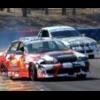Rca- Roll Center Adj
Announcements
-
Similar Content
-
Latest Posts
-
If doing that ^, I'd take the idle up valve out and plug the hole in the pump.
-
By joshuaho96 · Posted
You can try capping the power steering idle up valve at both ends if it's old. The valve and the intake manifold. That is something that is known to fail in Toyotas with age and it will suck power steering fluid into the intake and burn it in the engine which can cause issues. Then bleed it again with engine off first. Do like 30+ lock to lock turns with the front wheels off the ground. -
Hi Brent, I am wondering if you ever worked this out? I have upgraded this unit to a newer one and everything works bar the reverse camera, so i really want to know what plugs are what so I can patch the camera through. many thanks in advance Mike
-
Once you have to get up in the morning and be useful, you suddenly value sleep it turns out :p
-
By drifter17a · Posted
Update: smoke test all pipes no issues cleaned reservoir fluid put in ( dexron 3 atf) steering turn side to side and could hearing gurgling from steering rack which I assumed was air lock, opened one of the steering rack connections and could see loads of air getting pushed out( not sure if you meant to do that / whether it will re introduce air into system) anyways, loads of side to side sound was gone. Turned car on, pump was slightly ( barely) wining so turned side to side few more turns and fluid level when car on was almost none in resorvoir which I guess is normal if car is one. Turned car of and fluid was gushing out. Almost 200-300cc was pushed out. Repeated engine off side to side followed by engine on and same result going mad now. It seems system is either sucking air in whilst on or there is tons of air which I am not giving it enough time to bleed. Thoughts? would it work like brake caliper if I open steering rack copper pipes and let gravity pull all air out? or maybe have a restriction somewhere? What is the red circled item, could that be blocked? It i
-





Recommended Posts
Create an account or sign in to comment
You need to be a member in order to leave a comment
Create an account
Sign up for a new account in our community. It's easy!
Register a new accountSign in
Already have an account? Sign in here.
Sign In Now